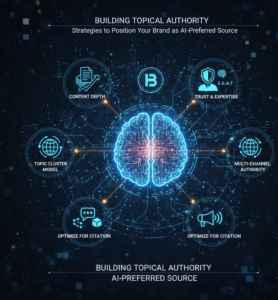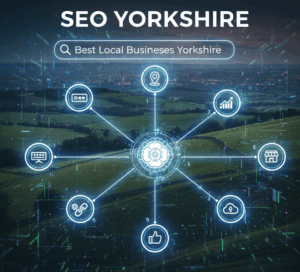62% of consumers say they trust customer testimonials more than brand advertising.
Are your testimonials truly connecting with your audience? In today’s fast-paced digital landscape, shoppers crave authenticity and emotional resonance more than ever before. With content fatigue and AI-generated posts flooding social media, the difference between gaining a loyal customer or losing them to scepticism often hinges on how compelling and genuine your testimonials feel.
Understanding what makes a testimonial resonate—whether it’s specificity, honesty, or relatable storytelling—can transform your social proof into a powerful driver of trust and conversions.
Key Areas
- What consumers really want from testimonials: specificity, honesty, relatability, and emotional connection
- How the “Before, During, After” storytelling format creates compelling, trustworthy narratives
- Why imperfect, authentic testimonials outperform overly polished ones in 2025
- The top platforms where customers seek testimonials before buying or booking (Google My Business, TripAdvisor, and more)
- Best practices for collecting and showcasing testimonials that convert and build lasting trust
Let’s Discuss Your Needs
What Consumers Look for in Testimonials
Customer testimonials remain one of the most influential forms of social proof in 2025. However, as consumers become more discerning amid growing content fatigue and the rise of AI-generated social media posts, the need for authentic, relatable stories has never been greater. This article dives into the psychology behind what today’s shoppers want to hear in testimonials and offers actionable insights on how brands can harness genuine customer stories to build trust, overcome scepticism, and drive meaningful conversions.
Today’s consumers are far more discerning than ever before. Generic praise no longer cuts it; shoppers want testimonials that feel real, specific, and emotionally engaging. Here are the key elements they look for:
- Specificity: Shoppers want clear, concrete examples of how a product or service solved a problem or improved someone’s life. Vague or overly general statements don’t build trust. For example, a testimonial that explains how a coffee maker consistently delivers barista-quality lattes every morning is far more persuasive than simply saying “I love this coffee maker.”
- Honesty: Balanced feedback that feels genuine is critical. Consumers can spot scripted or overly polished testimonials from a mile away. They appreciate when testimonials mention both pros and cons or describe the customer’s real experience without exaggeration.
- Relatable Stories: Testimonials that reflect real-life experiences and challenges resonate best. When shoppers see themselves in the story—whether it’s a busy parent, a small business owner, or a first-time traveller—they’re more likely to trust the recommendation.
- Emotional Connection: Stories that evoke empathy, hope, or inspiration create a deeper bond with the audience. Emotional resonance helps testimonials stand out amid the noise of marketing messages and AI-generated content.
The Power of the “Before, During, After” Storytelling Format
One of the most effective ways to structure testimonials is by using the “Before, During, After” narrative format. This approach creates a compelling, relatable journey that builds credibility and trust:
- Before: Describe the customer’s initial problem or situation. For example, “I struggled to find a coffee maker that could deliver consistent quality every morning.”
- During: Share their experience using the product or service. “After trying this coffee maker, I was amazed at how easy it was to use and how great the coffee tasted.”
- After: Highlight the positive results and transformation. “Now, I start every day with a perfect cup of coffee that saves me time and money.”
This storytelling structure helps potential customers envision their own journey and outcomes, making the testimonial more persuasive. Adding visuals like photos or videos of the customer or product in use further amplifies the testimonial’s impact and memorability.
These insights align with recent consumer data showing that 47% of shoppers trust customer testimonials and peer reviews when shopping on social media, and that authenticity and detailed real-world experiences are key to building that trust1. Brands that embrace these principles in their testimonial strategy are better positioned to connect meaningfully with today’s savvy consumers.
Why Imperfect, Authentic Testimonials Outperform Polished Ones
Younger generations, particularly Gen Z, have a strong preference for raw, unfiltered content over highly polished and scripted endorsements. They value realness and transparency, often viewing overly perfect testimonials as staged or insincere.
This preference ties into what experts call the “digital uncanny valley” effect—content that appears technically flawless but lacks emotional depth can feel fake or sterile, causing audiences to disengage. Perfectly polished testimonials may unintentionally trigger scepticism rather than trust.
By embracing imperfection, brands foster stronger emotional resonance and build deeper connections with their audience. Authentic testimonials that include honest feedback, natural language, and even minor flaws feel more relatable and trustworthy, helping brands stand out in a crowded digital space.
Platforms Where Consumers Seek Testimonials Before Buying or Booking
Consumers today rely heavily on trusted platforms to research testimonials before making purchases or booking decisions. Key platforms include:
- Google My Business (GMB): The most trusted and widely used source for local business reviews, essential for businesses with physical locations.
- TripAdvisor: The leading platform for travel, hospitality, and experience-based testimonials, influencing millions of booking decisions worldwide.
- Facebook & Instagram: Social proof comes through comments, tagged posts, and influencer endorsements, making these platforms vital for brand visibility and trust.
- Trustpilot & Yelp: Popular review sites for e-commerce and service industries, offering detailed customer feedback and ratings.
Data Insight: Over 80% of consumers consult at least one of these platforms before making a purchase or booking decision, underscoring the critical role of managing and showcasing authentic testimonials across these channels.
For brands, optimising presence and engagement on these platforms is crucial to building credibility and converting prospects into loyal customers.
How to Collect and Showcase Testimonials That Align with Consumer Expectations
Collecting and showcasing testimonials that truly resonate with your audience requires a thoughtful, strategic approach:
- Ask targeted questions: Instead of generic requests, prompt customers with specific questions that encourage detailed and honest feedback. For example, ask about the problem they faced, how your product or service helped, and the results they experienced. This helps elicit testimonials rich in specificity and authenticity.
- Use multimedia: Incorporate photos and videos alongside written testimonials to enhance storytelling. Visual content makes testimonials more engaging and believable, allowing potential customers to connect emotionally and see real-life proof.
- Maintain transparency: Avoid fake, incentivised, or overly edited reviews. Transparency builds trust, especially in an era where consumers are highly sceptical of inauthentic content. Clearly disclose when testimonials are sponsored or incentivised to uphold credibility.
- Integrate testimonials strategically: Place testimonials thoughtfully across your website, social media channels, email marketing, and other marketing materials. Doing so maximises their impact on trust-building and improves SEO by adding fresh, user-generated content that search engines value.
Conclusion
Understanding the psychology behind customer testimonials is essential for brands looking to build authentic connections in 2025. By prioritising specificity, honesty, and emotional storytelling—and leveraging trusted platforms like Google My Business and TripAdvisor—you can transform testimonials into powerful drivers of trust and conversion.
Take Your Customer Testimonials to the Next Level
Unlock the full potential of authentic customer stories with Be My Social. Our expert team will help you:
- Collect genuine, impactful testimonials that build trust
- Craft compelling multimedia stories that engage and convert
- Strategically showcase your social proof across platforms for maximum reach and SEO benefits
Don’t let your testimonials go unnoticed—turn them into your brand’s most powerful marketing tool today!

Peter
Peter Bezuidenhout is an SEO and digital marketing specialist based in KZN, South Africa, with a strong focus on serving UK and international clients. With nearly twenty years of experience, he helps brands increase their visibility and achieve growth through strategic SEO, results-driven campaigns, and creative content. His action-oriented, data-driven approach is tailored to help businesses thrive in today’s fast-paced digital world. Passionate about digital innovation, Pieter continues to deliver impactful results for his clients
A no-fuss attitude and a speedy turnaround!
I’ve found the to be the very best company for us after trying several others over the years.
I’m glad to have them, because the cost of hiring someone directly to do the same work would be impossible.
Highly recommended.
Ruth and Emily are amazing, they are always on hand to answer any questions and explain everything thoroughly.
Our contact Ruth always makes herself available for telephone/zoom meetings, constantly checks up on how sales are progressing and advises on changes to marketing strategies to try and ensure increased traffic to the website. I cannot recommend them highly enough 🙂
Discover More Insights: Explore Our Blog for Expert Tips and Strategies!

Design Theory: The Basics for Beginners in 2025/26
Did you know that in 2025, 94% of first impressions are based on design quality, and with AI tools evolving rapidly, mastering design theory ensures your creations remain human-centred and

Sheffield SEO: Proven Strategies to Boost Your Local Business in 2025/26
Sheffield SEO: Proven Strategies to Boost Your Local Business in 2025/26 Did you know that 46% of all Google searches now carry local intent, and with AI Overviews influencing 65%

Building Topical Authority: Strategies to Position Your Brand as an AI-Preferred Source
Did you know that in 2025/26, zero-click searches account for 65% of all Google queries, with AI Overviews synthesising answers from just a handful of trusted sources, leaving most brands

SEO Yorkshire: 10 Proven Strategies for Dominating Local Search in 2025/26
Did you know that 76% of consumers who search for nearby businesses on their smartphone visit a related store within 24 hours, underscoring the power of local SEO in driving

Grab Readers’ Attention with Engaging Copy: 10 Proven Tips for 2025/26
Boost engagement in 2025/26 with 10 proven copywriting tips to craft compelling headlines, strong hooks and reader-focused content that captures attention fast.

Creating Engaging Content for All Platforms
Did you know that 85% of consumers expect brands to produce content that feels authentic and relatable on social media, yet only 30% believe companies are delivering? As platforms evolve

